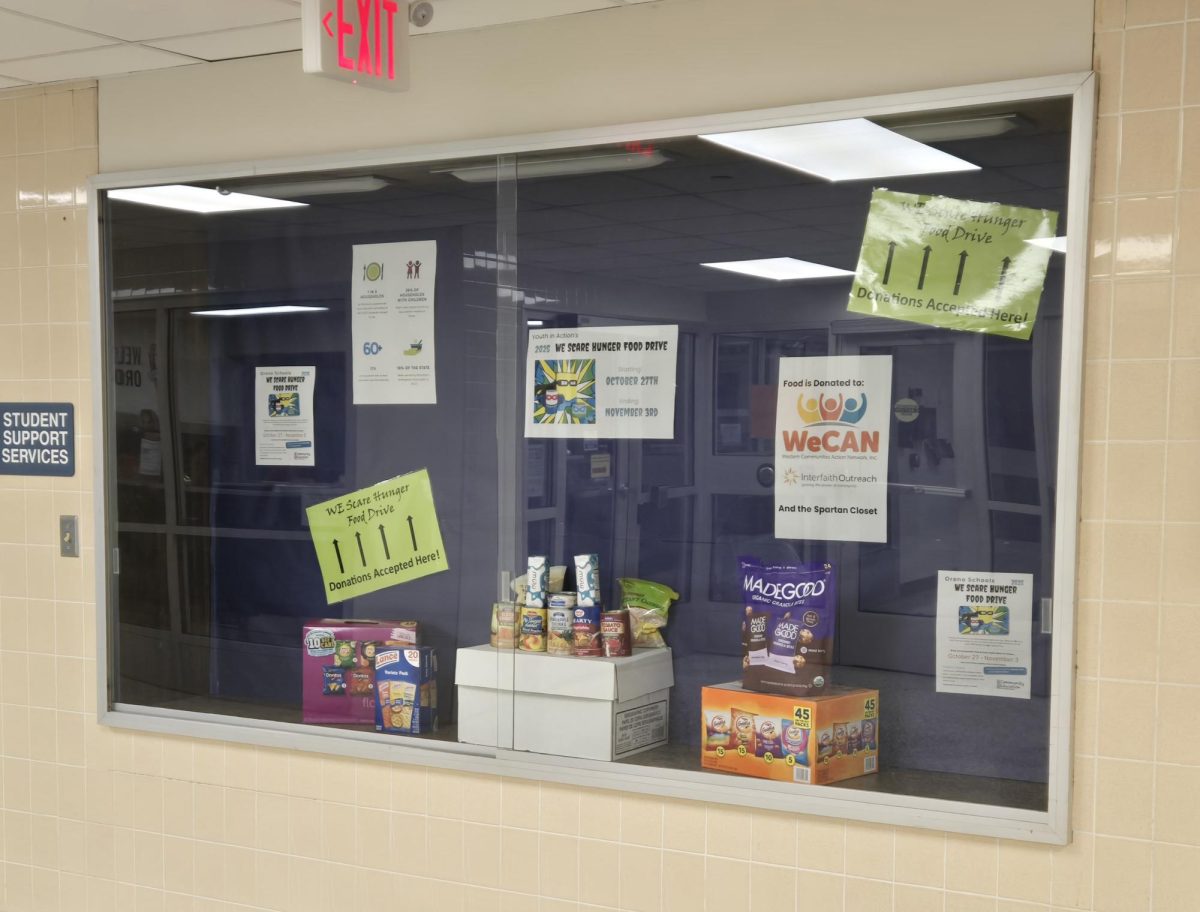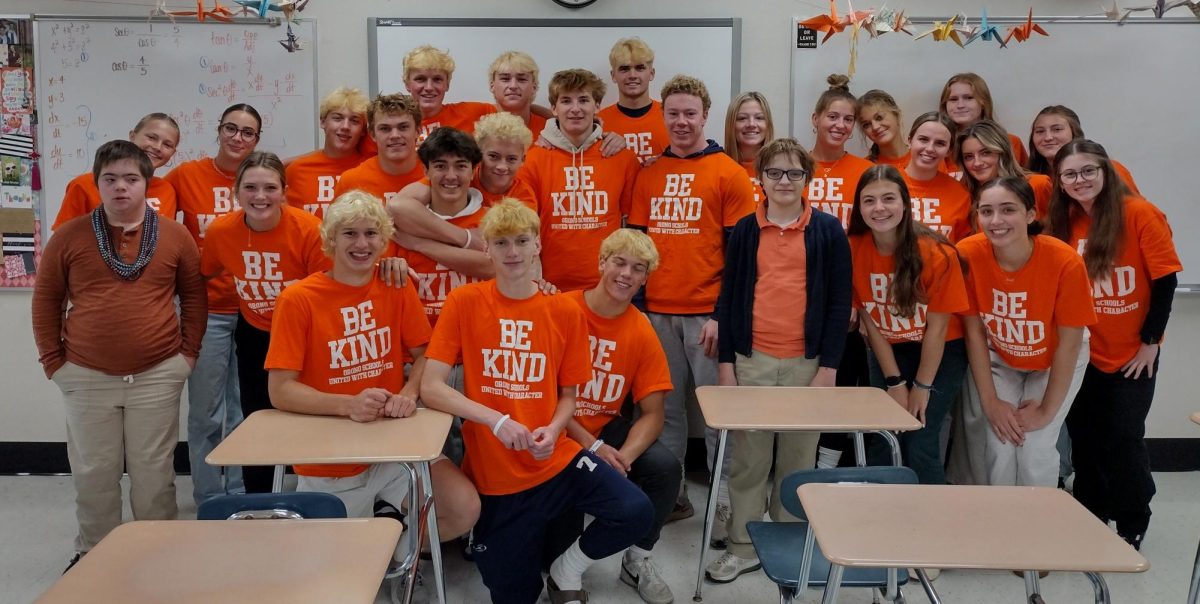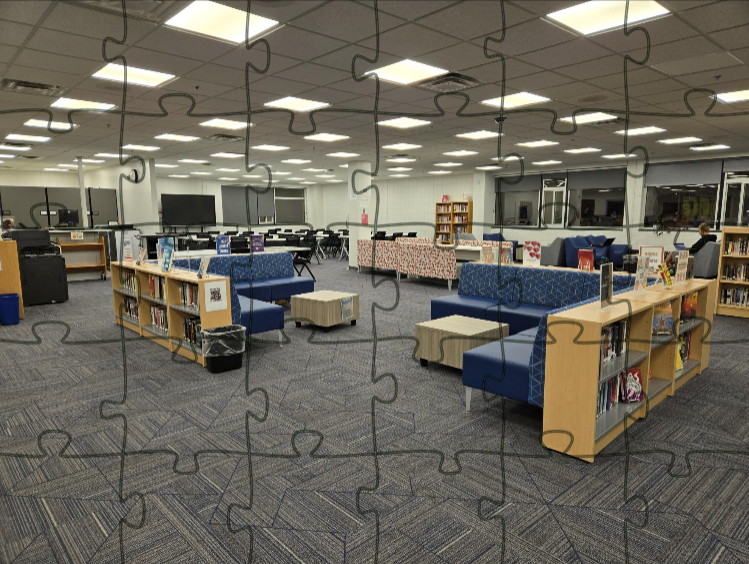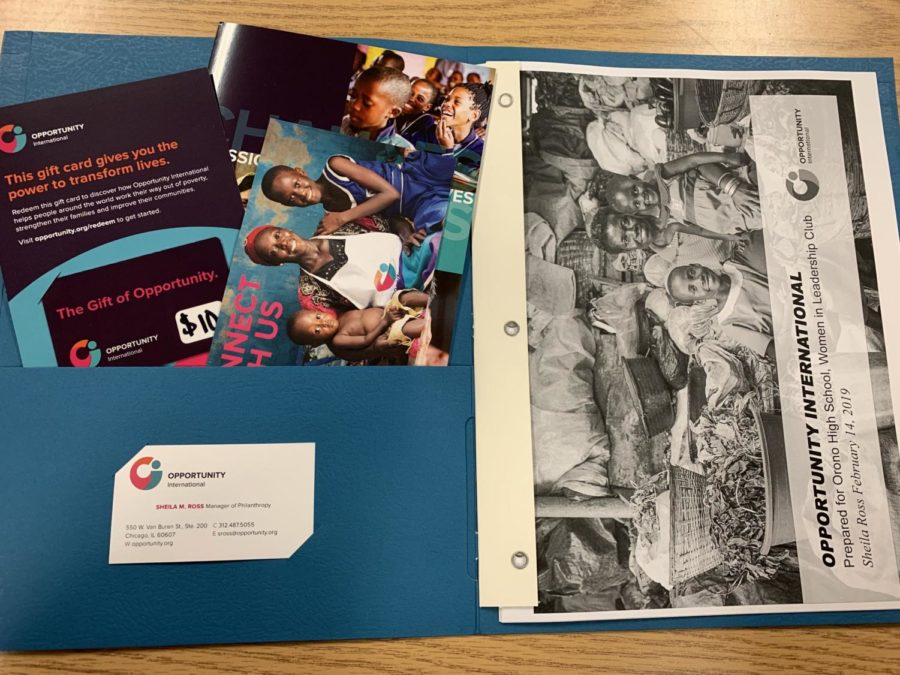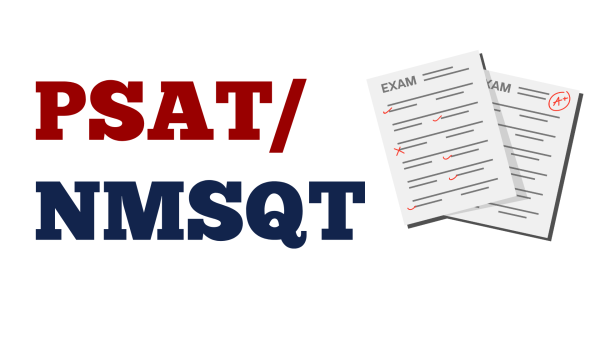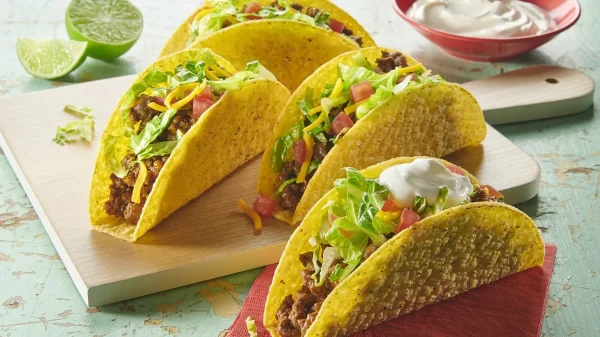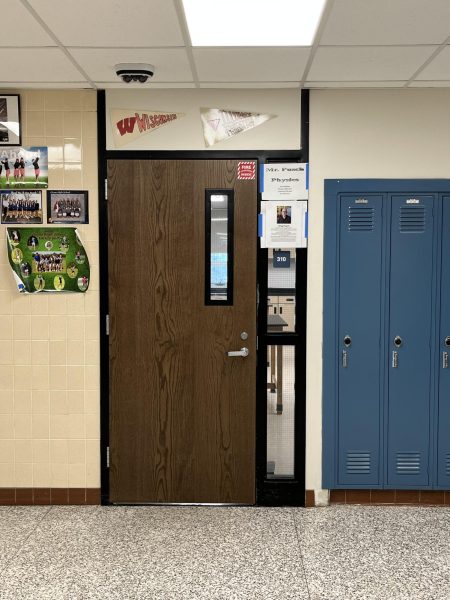Toxic Charity
Folders given out to Women in Leadership club on Feb. 3, while learning about Opportunity International.
Katie Udell
Editor in Chief
Beathe Iragiza is a mother, widow and genocide survivor.
In 1994, the Rwandan Genocide took the lives of Beathe’s children, husband, siblings and neighbors. She was left alone and wounded, until a few months after the genocide had befallen, she was reunited with two of her children that had survived. Unfortunately, Beathe was now a victim of extreme poverty as she had lost almost everything, except her will.
People are considered to be in extreme poverty if they live on less than $1.90 per day and currently there are 1.3 billion people faced with such hardships, according to the International Poverty Line. Although extreme poverty is decreasing worldwide, 10 percent of the global population still lives in these conditions in contrast to the 37 percent of people that were struggling with extreme poverty in 1990.
With Beathe’s three years of technical education, she took a piece of paper, rolled it, and started making bracelets and weaves for the local women in her community. A short while later, Beathe no longer had any money to continue her craft-making business. She turned to a friend who then told her about an organization called Opportunity International, a non-profit organization aiming to end extreme poverty in developing countries through the use of microloans to help fund upcoming entrepreneurs. Beathe had a plan, but all she needed was an opportunity.
Opportunity International bases its ideals off the concept of Toxic Charity, a book by Robert D. Lupten. The book focuses on the point that one-time donations (shipping food and supplies) most charities give don’t necessarily help those living in unfortunate conditions, but actually cause them more harm.
Toxic Charity came to light in Orono High School as Opportunity International’s Manager of Philanthropy, Sheila Ross came to speak to the Women in Leadership club on Feb. 3, during Spartan Hour.
Ross explained the importance of the model Opportunity International incorporated into its mission to end extreme poverty. The continuous cycle of giving a microloan to upcoming entrepreneurs is as easy as 1, 2, 3. Each member of the Women in Leadership club was given a $10 gift card in which they were encouraged to go onto the website and CHOOSE the entrepreneur they wanted to fund.
The success rate of Opportunity International is incredibly high with a loan repayment rate of 99 percent. This is due to the unique model that differentiates Opportunity International from other charities. Offerings like financial advice and local staffing are stationed in developing countries to help upcoming entrepreneurs make their businesses successful. Along with trust groups made up of 15-20 entrepreneurs who act as a security system to help each other repay loans, if one member can’t repay the loan that month, the group will cover for them.
“I have not been involved in one-time donations, I went to Haiti twice and have plans to go back to Thailand and do missions work with the Santisuk schools again. Along with this, this September 2019 I will be leaving for Seattle, Washington to go through ministry training and then leave for international missions work in a different country,” senior Bella Haedtke said.
Insight trips are a popular and impactful aspect that Opportunity International offers to its donors, where donors have an opportunity to travel to impoverished countries and meet the entrepreneurs they are currently funding, and watch their dreams become a reality.
“I have gone to Haiti with Healing Haiti two times, both of which were spent doing ministry within orphanages and teaching English to the people of Cite Soleil, the most impoverished area of Haiti,” Haedke said.
Many charities pride themselves on raising money and sending supplies and food to those living in developing countries, but food and supplies run out quickly … then what? The continuous cycle of one time donations is a cause of extreme poverty and can make it difficult for people living in developing countries to truly work their way up and out. This type of donation puts a bandaid on a battle wound.
These types of charities travel to developing countries to build houses along with delivering water, food, and other supplies. When this is done, a house is built, that person has shelter and necessities to satisfy their hunger and thirst. We feel pride in the fact that we have done something, anything to help one in need. What isn’t thought about is, what happens when the roof caves in and the food runs out? If that person didn’t even build their own house, how could they repair it?
Another organization similar to Opportunity International is Pura Vida Bracelets. Every Pura Vida bracelet is handcrafted by artisans all over the world, then sold online or in stores located around the world. Currently, 650+ artisans depend on steady income in positive working environments, thanks to the support of Pura Vida Bracelets customers.
Pura Vida Bracelets was founded in 2010 by Griffin Thall and Paul Goodman, while traveling to Costa Rica for a college graduation trip. There, they met Jorge and Joaquin, two local bracelet artisans who were at that time living in extreme poverty. From there, Griffin and Paul asked them to make 400 bracelets to bring back to California and sell to the public.
Many know of the popular metaphor of giving a man a fish versus teaching a man to fish, but what most don’t think about is that for a man to fish one should probably give him a fishing pole. Thus, organizations like Opportunity International and Pura Vida give a small handout, but expect those in poverty to work their way out themselves, with a hand up, not a big hand out.

